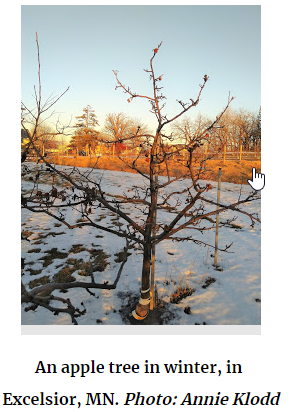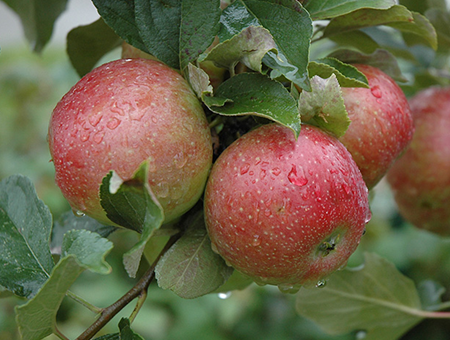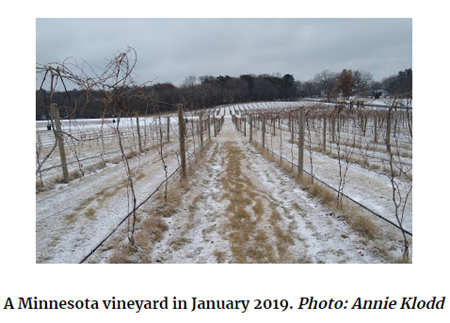Click below to listen to my 2 min. Garden Bite radio show: How will the Polar Vortex affect our fruits
It was so cold… how cold was it? They closed schools in Minnesota and Wisconsin for days! THAT’S cold, thanks to the polar vortex! What might that record cold do to our apples and grapes?

APPLES: University of Minnesota Professor of Fruit Breeding, Jim Luby, says, as far as apple cultivars go, those rated as “very good” or “excellent” cold hardiness such as Frostbite and Sweet Sixteen should not show much damage in the southern third of the state but may suffer some damage in the more northern areas.

Varieties listed as “good” or “fair” cold hardiness such as Regent and SnowSweet will likely suffer damage in the southern part of our cold zones and could be killed in the north.
The ability of a fruit tree to survive also has to do with the age of the tree and how healthy it is. Young trees, less than 5 years old, are usually more tender than older trees. Additionally, trees that were stressed during 2018 by overcropping (too many fruits produced on the tree), late season drought, or poor nutrition are more susceptible to winter injury because they were already starved for energy going into the winter.
Cold Hardy Fruits [U of MN Ext.]
GRAPES: The polar vortex most likely did injure our Minnesota grapevine cultivars, killing some of the buds that would become fruit this year and possibly killing some of the woody tissue (trunks and branches) as well.

The good news is that the few inches of snow on the ground will help protect the trunks and roots, allowing them to re-grow from the ground if the trunk itself is injured or killed. The full story from the U of MN Extension.
NOTE: The newer varieties of grapes will be more susceptible to damage.
Itasca: This is a new variety from the University of Minnesota. The toughest test of Itasca’s hardiness before today was the polar vortex of 2014, but it did not get as cold then as 2019. In 2014, its bud survival was about 63% in a UMN evaluation, which was substantially higher than La Crescent, Marquette, Brianna, the Frontenacs, and Edelweiss that year.
